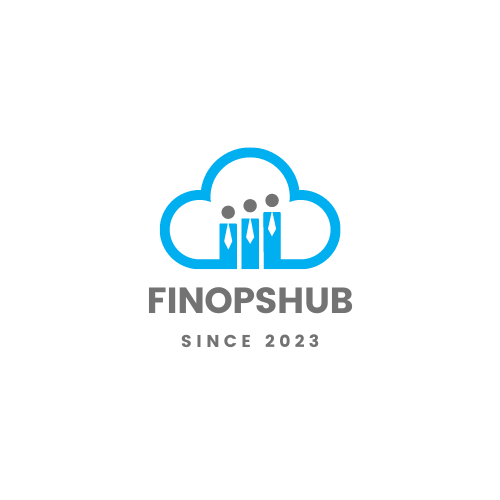Effective cloud cost management is crucial for companies, small businesses, IT, and finance professionals who seek to optimize spending and align financial strategies with operational goals. It involves understanding pricing models and computing service models that cloud providers offer.
Best Cloud Cost Management Platforms
There are several cloud cost management tools available, each offering distinct features that can help streamline your cloud financial management. Here are some of the top options:
| Tool | Notable Features | Link |
|---|---|---|
| Anodot | Monitoring data flow and costs | Anodot |
| Apptio Cloudability | Team-based cloud cost management | Cloudability |
| Datadog | Performance and cost data analysis | Datadog |
| Flexera One | Multicloud accounting and optimization | Flexera |
| Harness | Automated budget maintenance | Harness |
| Turbonomic | AI-powered infrastructure management | Turbonomic |
| Kubecost | Kubernetes spending tracking | Kubecost |
| NetApp CloudCheckr | Cost control and forecasting | CloudCheckr |
| Densify | Scaling resources based on load | Densify |
When selecting a tool, consider your specific needs and how each tool’s features align with those needs. Tools like Turbonomic offer AI-powered optimization, while Kubecost specializes in Kubernetes-specific spending tracking. For comprehensive multicloud solutions, Flexera One and NetApp CloudCheckr provide robust options.

Features of Cloud Cost Tools
Effective cloud cost management tools come equipped with a variety of features designed to help you monitor, analyze, and optimize your cloud spending. Here are some of the key features that you should look for:
- Tracking Data Flow: Monitoring the flow of data through your services and applications.
- Cost Allocation: Assigning cloud costs to specific teams, projects, or business units for accurate accounting.
- Performance Monitoring: Keeping an eye on the performance and cost efficiency of your cloud infrastructure.
- Budget Guidelines: Establishing budget limits to ensure expenditures stay within bounds.
- Optimization Suggestions: Recommending ways to optimize your cloud usage to reduce costs and improve efficiency.
- Predictive Analysis: Forecasting future costs to aid in budgeting and financial planning.
These features provide you with the insights and tools you need to manage your cloud finances effectively. For more on controlling cloud expenses, you can read about finops principles and 10 cloud cost reduction strategies.
Cloud Service Pricing Models
Cloud service pricing models vary greatly depending on several factors, including the type and quantity of services, computing resources required, data transfer rates, and storage needs (Datamation). Here are some common pricing models you might encounter:
- Pay-As-You-Go: Charges based on actual usage without upfront costs. Ideal when resource needs are uncertain.
- Reserved Instances: Offers discounted rates in exchange for committing to use a certain amount of resources over a specified period. Learn more about reserved instances vs on-demand pricing.
- Spot Instances and Preemptible VMs: Allows bidding on unused compute capacity at reduced rates. They can be a cost-effective solution, though they come with the risk of sudden termination. Explore more on spot instances and preemptible VMs.
| Pricing Model | Description | Best Use Case |
|---|---|---|
| Pay-As-You-Go | Charges based on actual usage | Unpredictable workloads |
| Reserved Instances | Discount for long-term commitment | Steady-state applications |
| Spot Instances | Bidding on excess capacity for lower cost | Flexible workloads |
Cloud Computing Service Models
When looking towards the best cloud cost management platforms, understanding the different cloud computing service models is essential in selecting the right solution that fits your needs. These models include Infrastructure-as-a-Service (IaaS), Platform-as-a-Service (PaaS), and Software-as-a-Service (SaaS) (Datamation).
- Infrastructure-as-a-Service (IaaS): Provides virtualized computing resources over the internet. It allows you to rent IT infrastructure such as virtual machines, storage, and networks on a pay-as-you-go basis. Best for IT departments looking to extend their data centers.
- Platform-as-a-Service (PaaS): Offers hardware and software tools over the internet. Mostly used in application development by providing a platform allowing customers to develop, run, and manage applications without dealing with the infrastructure.
- Software-as-a-Service (SaaS): Delivers software applications over the internet, on a subscription basis. This model is widely used for bringing resources and integrated solutions directly to end-users.
| Service Model | Components | Best Use Case |
|---|---|---|
| Infrastructure-as-a-Service (IaaS) | Virtual machines, storage, networks | IT infrastructure needs |
| Platform-as-a-Service (PaaS) | Development platforms and tools | Application development |
| Software-as-a-Service (SaaS) | Software applications | End-user software needs |
Effective management of cloud costs involves selecting the right combination of pricing and computing service models. Monitoring tools aid in this process by providing visibility into resource usage, eliminating waste, and predicting future costs. To delve deeper into optimizing cloud spend, you might find our article on 10 cloud cost reduction strategies valuable.
My Take
Explore these tools to see how they can optimize your cloud costs, support cloud budgeting and forecasting, and ensure efficient resource management. For more strategies on managing cloud finances, visit our section on finops vs traditional it finance.





